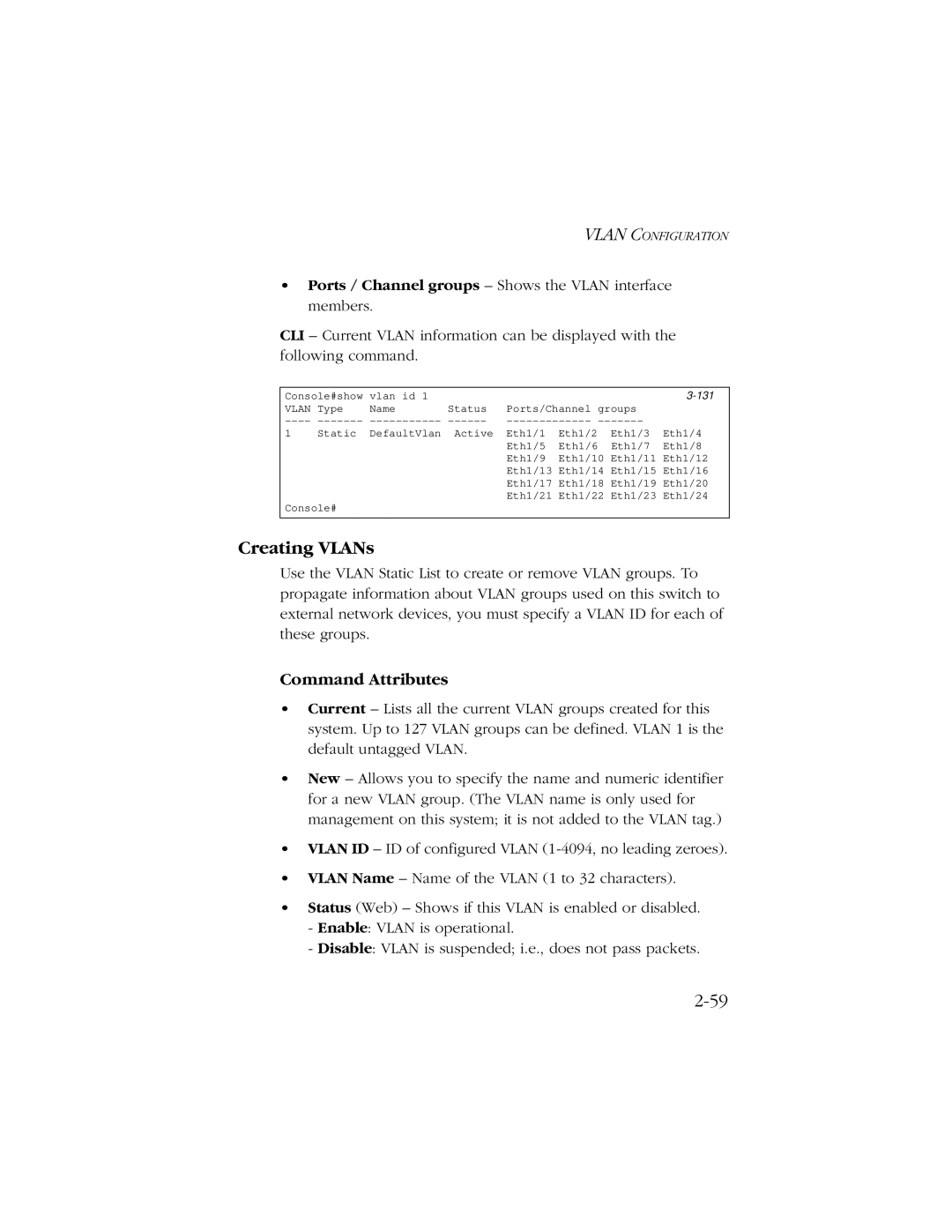VLAN CONFIGURATION
•Ports / Channel groups – Shows the VLAN interface members.
CLI – Current VLAN information can be displayed with the following command.
Console#show | vlan id 1 |
|
|
|
|
| |
VLAN Type | Name | Status | Ports/Channel groups |
| |||
| |||||||
1 | Static | DefaultVlan | Active | Eth1/1 | Eth1/2 | Eth1/3 | Eth1/4 |
|
|
|
| Eth1/5 | Eth1/6 | Eth1/7 | Eth1/8 |
|
|
|
| Eth1/9 | Eth1/10 | Eth1/11 | Eth1/12 |
|
|
|
| Eth1/13 | Eth1/14 | Eth1/15 | Eth1/16 |
|
|
|
| Eth1/17 | Eth1/18 | Eth1/19 | Eth1/20 |
|
|
|
| Eth1/21 Eth1/22 | Eth1/23 | Eth1/24 | |
Console# |
|
|
|
|
|
| |
|
|
|
|
|
|
|
|
Creating VLANs
Use the VLAN Static List to create or remove VLAN groups. To propagate information about VLAN groups used on this switch to external network devices, you must specify a VLAN ID for each of these groups.
Command Attributes
•Current – Lists all the current VLAN groups created for this system. Up to 127 VLAN groups can be defined. VLAN 1 is the default untagged VLAN.
•New – Allows you to specify the name and numeric identifier for a new VLAN group. (The VLAN name is only used for management on this system; it is not added to the VLAN tag.)
•VLAN ID – ID of configured VLAN
•VLAN Name – Name of the VLAN (1 to 32 characters).
•Status (Web) – Shows if this VLAN is enabled or disabled.
-Enable: VLAN is operational.
-Disable: VLAN is suspended; i.e., does not pass packets.
